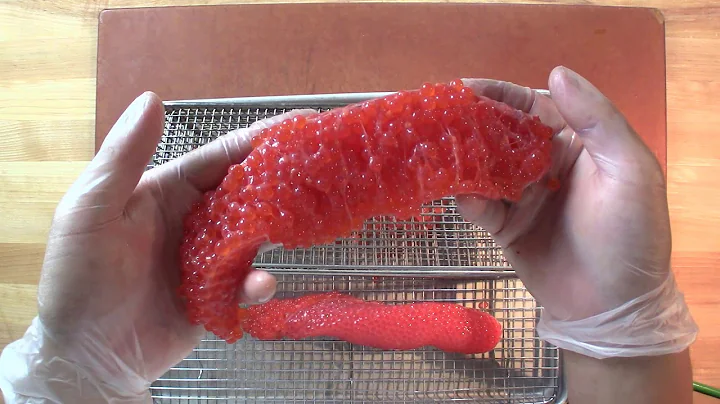Preparation and Standardization of 0.1M Sodium Thiosulfate Solution
Table of Contents
- Introduction
- Chemical and Reagent Preparation
- Preparation of One Percent Starch Solution
- Preparation of 15% Potassium Iodide Solution
- Preparation of Expected 0.1 Molar Sodium Thiosulfate Solution
- Preparation of Potassium Dichromate Solution
- Standardization of Sodium Thiosulfate Solution
- Calculation of Actual Molarity
- Conclusion
- FAQs
Introduction
Welcome to Microgames, where we delve into the fascinating world of chemical experiments and their preparations. In this article, we will be focusing on how to prepare and standardize a 0.1 molar sodium thiosulfate solution. This method involves a series of steps, from chemical and reagent preparation to the final calculation of the actual molarity. So, grab your lab coats and let's dive in!
Chemical and Reagent Preparation
One of the essential prerequisites for any test is the proper preparation of chemicals and reagents. In this section, we will walk you through the preparation of the necessary solutions, such as the one percent starch solution and the 15% potassium iodide solution. These preparations ensure accurate and reliable results in subsequent steps.
Preparation of One Percent Starch Solution
To start, we will prepare a one percent starch solution, which will serve as an indicator in our sodium thiosulfate preparation. Begin by taking 50 mL of distilled water in a beaker and boiling it on a hot plate. Then, weigh 0.5 grams of starch powder and transfer it into the hot water. Continuously stir the solution with a glass rod and periodically boil it. Once the starch is completely dissolved, filter the solution, and congratulations! Your one percent starch solution is ready for use.
Preparation of 15% Potassium Iodide Solution
Next up, we move on to preparing a 15% potassium iodide solution. Dissolve 15 grams of potassium iodide crystals into 100 mL of distilled water. Stir the solution until all the crystals have dissolved completely. This solution will play a vital role in our subsequent steps, so ensure its proper preparation.
Preparation of Expected 0.1 Molar Sodium Thiosulfate Solution
The anticipated 0.1 molar sodium thiosulfate solution is a key component of our experiment. To prepare this solution, take 2.48 grams of sodium thiosulfate crystals and transfer them into a 100 mL volumetric flask. Fill the flask with distilled water up to the mark, then swirl it to mix the solution thoroughly. Finally, label the flask as "Expected 0.1 Molar Sodium Thiosulfate Solution."
Preparation of Potassium Dichromate Solution
Now, let's turn our attention to preparing the potassium dichromate solution. Begin by taking a portion of potassium dichromate crystals in a glass dish. Dry the crystals at 110 degrees Celsius for 30 minutes. Once dry, allow the potassium dichromate to cool in a desiccator. Take 0.16 to 0.22 grams of the dried potassium dichromate crystals and transfer them into a conical flask. Add 25 mL of distilled water and swirl the flask to completely dissolve the crystals. Next, add 5 mL of concentrated hydrochloric acid and 20 mL of the prepared 15% potassium iodide solution into the flask. Swirl the flask once again and wait for 5 minutes. Add 100 mL of distilled water and swirl the flask to ensure proper mixing of the contents.
Standardization of Sodium Thiosulfate Solution
In this step, we will perform the standardization of the sodium thiosulfate solution using the prepared potassium dichromate solution. Take the newly prepared sodium thiosulfate solution in a burette and note the initial burette reading. Proceed to titrate the potassium dichromate solution, liberating the sodium thiosulfate solution from the burette. Carry out the titration until the yellow color is almost disappeared. Pause the titration when the yellow color has completely faded. Now, add 1 mL of your one percent starch solution into the flask and resume the titration. Stop the titration when the blue color has disappeared entirely. Note the final burette reading.
Calculation of Actual Molarity
Now, let's perform some calculations to determine the actual molarity of the newly prepared sodium thiosulfate solution. We have used 0.169 grams of potassium dichromate crystals, denoted as "w" in the equation. The volume of sodium thiosulfate solution used in the titration, denoted as "v," can be calculated by subtracting the initial burette reading from the final reading. By solving the equation, we find that the actual molarity of the sodium thiosulfate solution is 0.101 molar. Make sure to correct the label on the flask containing the sodium thiosulfate solution with the updated molarity.
Conclusion
In conclusion, the preparation and standardization of a 0.1 molar sodium thiosulfate solution involve several crucial steps, from the preparation of chemicals and reagents to the final calculation of actual molarity. Following the procedures outlined in this article will ensure the accuracy and reliability of your results. So, roll up your sleeves, put on your safety goggles, and embark on your own chemical journey!
FAQs
Q: Can I use a different concentration of starch solution for this experiment?
A: The use of a one percent starch solution is recommended for accurate results. Altering the concentration may yield different outcomes.
Q: Why is the standardization of the sodium thiosulfate solution necessary?
A: The standardization process ensures that the concentration of the sodium thiosulfate solution is known precisely, leading to accurate calculations and reliable experimental results.
Q: Is it essential to dry the potassium dichromate crystals before preparing the solution?
A: Yes, drying the crystals removes any moisture that might affect the solution's concentration, ensuring accurate results.
Q: Can I skip the potassium iodide solution preparation step?
A: No, the 15% potassium iodide solution is a vital component in the reaction and plays a crucial role in the titration process.
Q: What precautions should I take during the experiment?
A: Always wear appropriate safety attire, including gloves and goggles, when handling chemicals. Follow proper lab protocols and dispose of waste materials correctly.







